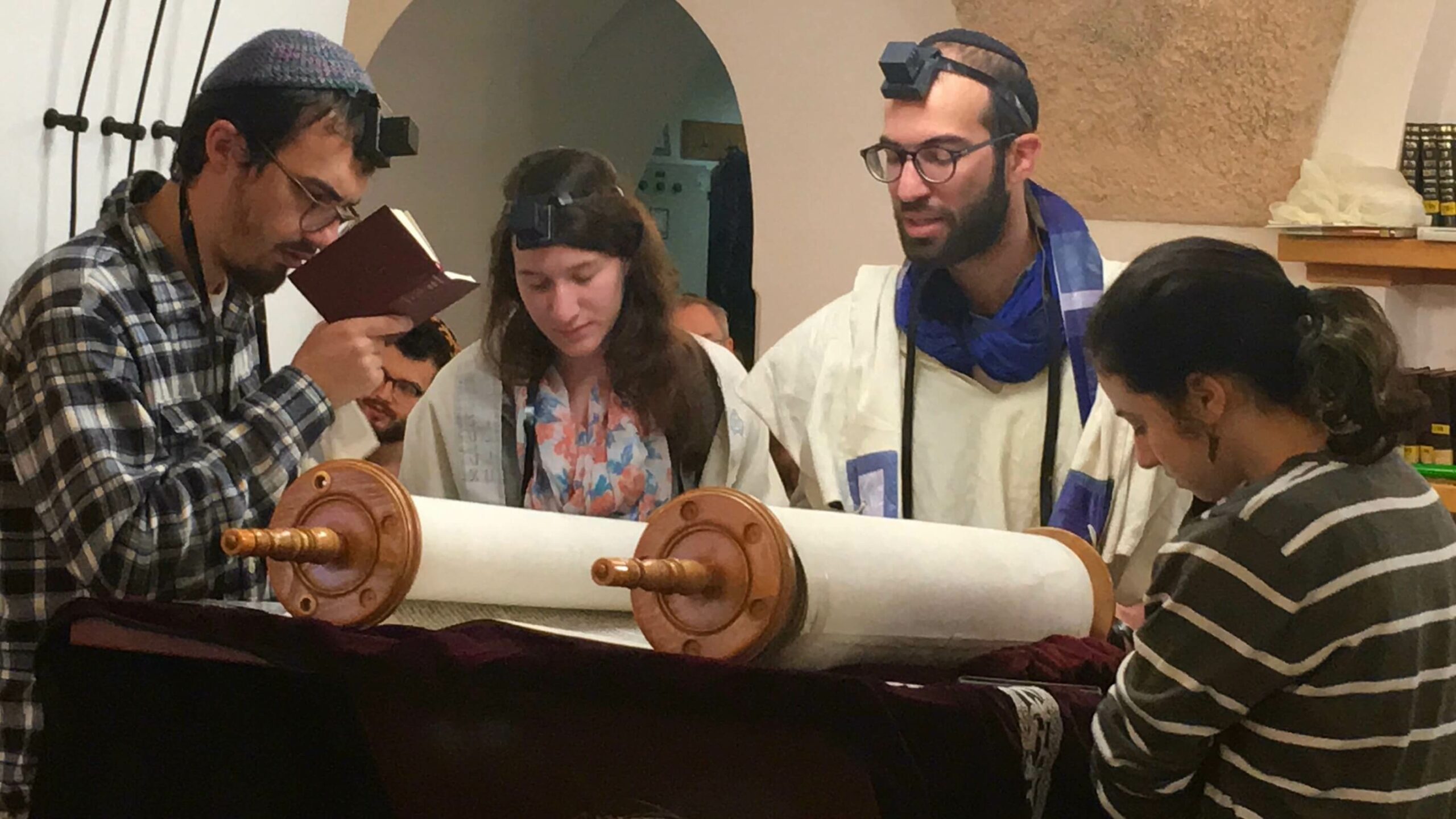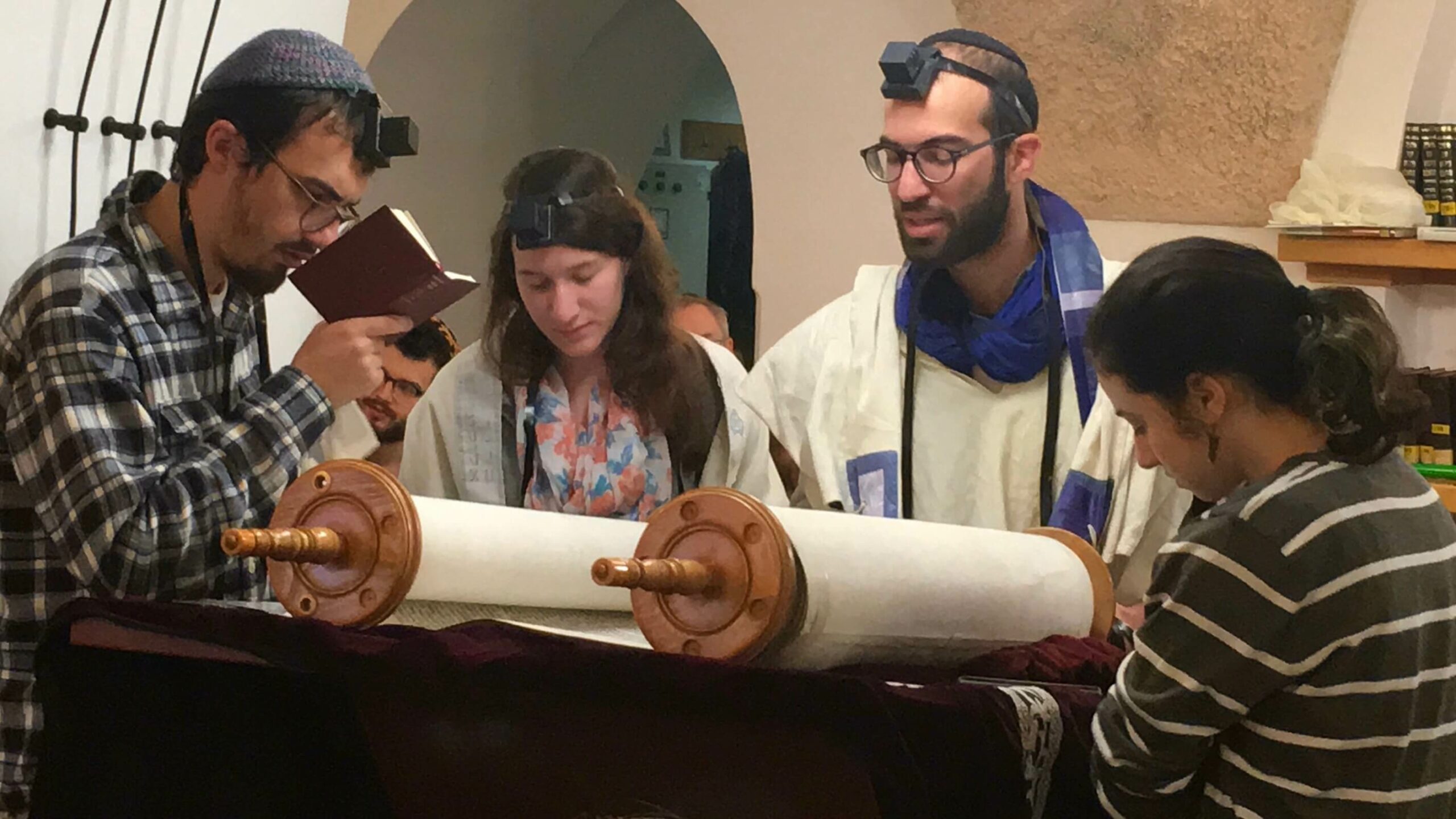

Parashat Pekudei March 9, 2019 I 2 Adar II 5779
Annual | Exodus 38:21-40:38 (Etz Hayim p. 564; Hertz p. 385)
Triennial | Exodus 39:22-40:38 (Etz Hayim p. 567; Hertz p. 387)
Haftarah | 1 Kings 7:51-8:21 (Etz Hayim, p. 580; Hertz p. 392)
D’var Torah: The Cloud & The Glory
Dr. Shaiya Rothberg, Conservative Yeshiva Faculty
In our parashah we arrive at the dramatic conclusion of the Book of Exodus: The cloud of God’s Glory covers the Mishkan from without, and the Glory of God fills it from within (Shemot 4:34). It is because God’s Glory fills the tabernacle that we call it the Mishkan – dwelling place. It would have looked like a rectangular courtyard sounded by a fence and with a tent set up in the middle. It isn’t hard to imagine a cloud cloaking the tent from above. But what about the Glory of God? It says that Moshe couldn’t enter the tent not only because of the cloud, which obviously he could see, but also because of the presence of the Glory (Shemot 4:35). That suggests that Moshe knew that the Glory was there. But how did he know? Was the Glory like a luminescent gas? Or a bright light? Did it hum like high-voltage electric wires? Or perhaps it was a felt presence, like the presence of a person?
I can’t imagine that only Moshe could see or feel the Glory of God. It must be that the rest of us, the people of Israel in the camp, also could feel that it was there. Our whole existence as a people, and the drama of the book of Exodus, leads up to this indwelling of God’s Glory. Surely it felt like something to be in the vicinity of that presence. As I imagine it, when the cloud and Glory of God first manifested in the Mishkan among the Israelites – a moment captured forever in Shemot 40:34 – the atmosphere must have been electric.
The first thing that would have captured our attention, if we follow the Zohar’s interpretation (2:149a), would be the unusual lighting. The Talmud teaches (Bavli Hagiga 12a) that on the first day of creation God created a primordial light enabling a person to see from one side of the Earth to the other. But the light was too powerful for humans, and so God hid it away. Not completely away, adds the Zohar. God planted the primordial light like a seed and from it emerge life and abundance that animate all existence to this very day. The Zohar further teaches that in the moment captured in Shemot 40:34, the primordial light shone forth from the divine cloud cloaking the tent of meeting. It must have felt that you were standing at the center of the world, the continents and oceans of the planet stretched out before your eyes as the primordial light curved around the horizon.
In Shemot 40:34-35, the verb used to describe the Glory of God is not mila which means to fill but rather male which can mean to be full. The Zohar (1:67a) explains that’s because the Glory of God inside the Mishkan was like the fullest of moons filled with the light of the sun. In another place, the Zohar (2:269a) teaches that a rucha kadisha – holy spirit – flowed out from the Glory and (following Isaiah 25:8) washed from the Earth all death and every tear. It follows that the Earth – whose four corners were revealed to the eyes of the Israelites because of the primordial light which issued from the cloud – was a world without shadow; pristine, like the first week of creation. For a moment, they saw the world as God intended it to be, abounding in light, life, color, movement, sexuality, creativity, rest, holiness and completion (as described in the first chapter of Bereshit). Maybe if we put our minds to it when we hear the dramatic words of Shemot 40:34-35 this week, we can catch a glimpse of that vision. I think that the sages of the Zohar shared with us what they saw when they heard those words so that we might see it, too. It is at least worth giving the scene a few moments thought: It must have been a truly amazing thing to stand way back then in the desert around the Mishkan – God’s dwelling place – when the cloud and the Glory first appeared.
Parashat Pekudei Self-Study
Vered Hollander-Goldfarb, Conservative Yeshiva Faculty
We are in the last parashah of the book of Exodus. It is time to sum up and give an accounting of all that was donated and made to invite God’s presence is settled on the Mishkan (Tabernacle).
1) The parashah opens with the names of those involved in the work. For the first time we find out that Itamar, son of Aaron, was in charge of the work of the Levites (38:21). Itamar is the third son, so we can assume that he was not chosen for his birth order. What qualifications would you expect a person in such a position to possess?
2) The next people mentioned are Betzalel who did ‘all that the LORD commanded Moshe’, and Oholiav who knew how to work in metals and fabrics (38:22-23). In last week’s reading Betzalel was described as the talented craftsman and Oholiav was merely mentioned. Why do you think that the descriptions have changed?
3) When all the work is completed, the Torah says “the Children of Israel did all that the LORD commanded Moshe” (39:32). Why is the credit given to the entire nation, not to the craftspeople who did the work?
4) The parashah opened with a list of the materials used and some indication of what they were used for (38:24-39:1). When the work is completed, we are given a second list, this time of the various vessels that were made (39:33-42). What is the purpose of each list? Why do we need lists like these at all?
5) When Moshe puts together the Mishkan (40:18-33), the phrase “as the LORD commanded Moshe” is repeated 7 times, at each phase. What might it teach us about the relationship of the human and the divine in the Mishkan?
D’var Haftarah: Good Leadership
Rabbi Mordechai Silverstein, Conservative Yeshiva Faculty
This week’s haftarah begins with Solomon’s completion of the Temple. The opening sentence contains what seems to be an odd detail: “And the task which King Solomon had done was finished in the House of the Lord, and Solomon brought the dedicated things of David his father, the gold and the silver, and placed the vessels in the treasury of the House of the Lord.” (7:51) For a good many commentators, the fact that David’s wealth was only being brought to the Temple treasury upon its completion seemed strange. Why wasn’t his wealth used in the actual building of the Temple?
Rabbi Levi ben Gershon (14th century France) provides what has become a conventional answer to this question: “We learn from this place that Solomon used his own wealth to build this great house… for this was intended by God blessed be He, for He did not want David to build it, for he had spilled much blood, and because he had accumulated his wealth from the spoil of the nations in war, but Solomon was a man of peace.”
An earlier midrash (Pesikta Rabati, 8th century Eretz Yisrael) debates the reasons David’s wealth was not used in the actual building the Temple. The midrash provides two contrasting views. According to the first, this was done with David’s blessing. David had foreseen that the Temple would be destroyed, and he was concerned that the Nations of the World might say that it was THEIR GODS who had done it, as punishment for David destroying their temples and using the loot to build a temple to the Israelite God. Instead, “David prayed that Solomon should have no need for the things which he, David, had dedicated” and could build the Temple using his own resources. Thus, the Nations of the World would have no claim, and everyone would understand properly that the one and only God had destroyed the Temple to punish Israel.
According to the second view, however, Solomon’s action is a tacit rebuke of David: “In the days of David, there was a famine for three years. And David had many treasuries filled with silver and gold which he had prepared for building the Temple, treasuries which he should have spent to keep people alive; but he did not do so. God said to him: “My children are dying of hunger, and you are amassing riches to build a building. You should have focused on keeping people alive but you didn’t do so. As you live, Solomon will not need to take any of your wealth.” (adapted from Pesikta Rabati 6:9 Ish Shalom ed. 25b-26a) In this version, God reproaches David for having the wrong priorities. He valued buildings (the Temple included) over people and as a result, lost out on the merit of being the Temple’s sponsor.
What is common to both interpretations is that good leaders need to focus on the concerns of their people and not their own glory – whether it is their short-term need for food and shelter or their long-term need to draw the proper lessons from both tragedies and histories.







